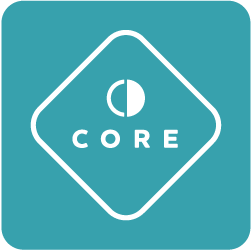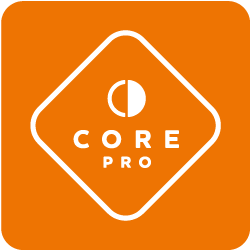
The ability to search and find information online plays a huge part of our daily life, and search engines like Google, Yahoo and Bing provide the technology to make this happen. With Google currently dominating 78% of the global search market, the question is, how you do recruitment agencies maximise their online candidate acquisition and social media strategies to attract more suitable candidates?
Google has the ability to crawl and build an index of about 50 million web pages in less than one minute and processes on average 40,000 search queries every second. It has been reported that up to 30% of search queries can be employment related, so it’s painfully obvious that candidates are out there, but knowing how to get in front of active and passive candidates online, however isn’t so obvious.
To assist you, we have compiled some practical tips to help you optimise your online jobs ads and engagement on social media.
Your Website’s Job Board
Posting job ads on your own website is a cost effective way to advertise your open jobs whilst building your brand within the market.
Compared to the wide range of paid job boards in the market like Monster, Jobsite, Indeed and LinkedIn, your own website’s job board gives you more freedom, flexibility and control to format and promote job ads to assist with attracting quality candidates. The only downside is that your job board probably doesn’t have the same visibility or online reach that major paid jobs boards possess. So how exactly can you hope to compete in an online paid job site oligopoly?
Search Engine Optimisation (SEO) Keywords
Simply put, one of the ways Google (or any other search engine) determines relevance when listing web pages in a search result is through keywords. A website page that is well optimised for search engines “speaks the same language” as its potential visitor base with keywords that help connect searchers to your web page.
The importance of keywords and SEO, is often overlooked by recruiters when writing a job ad, so we have a few simple tips to follow.
For job searches most candidates will type in something like this:
“Operations Manager job based in Central London”
Phrases like these are effectively the “target keywords”. In order to be even ranked for these page search results you need to make sure that these keywords are included in the right sections of your website’s job advert page structure. These sections are:
- URL structure
- recruitmentagency.com/job/operations-manager-based-in-central-london/
- Title (page headline)
- Operations Manager based in Central London
- Job Information (page copy)
- Job details
- Requirements
- Contact details and call to action
These are the main sections Google will look for when determining a pages relevance for certain phrases.
Make sure you’re using natural phrases and terminology that your target candidates actually use, and most importantly don’t overpopulate your job ad with the same keyword. Google notices when pages and posts have been “stuffed” with keywords, when it identifies this it will penalise this page and lower its rankings.
Structured Data Markup
Google is great at reading page text and content, what it often struggles with is the context around particular pieces of information. While Google might recognise that “Central London” is address orientated, it won’t understand whether that address is a location for a job ad. While this might sound overly technical (most web developers should be able to get their heads around this) you can deploy specific code on your job advert pages that clearly signposts to Google that all of the information on this page pertains to a job advert.
A Responsive Website (Mobile Friendly)
Your website pages needs to look good and be responsive when viewed on a mobile device for two very important reasons.
- According to Glassdoor, 68% of job seekers use a mobile device to perform job searches once a week or more. While potential candidates may use a desktop computer to send their CV and cover letter, the bulk of their searches and research is going to be done in their spare time or while they’re on the go.
- Google has introduced guidelines for websites that it thinks aren’t mobile friendly when presenting search results on a mobile device. If candidates have to pinch and zoom to read your job ads, then you must upgrade your website if mobile visits are important to you. If you’re unsure if your website is mobile friendly in Google’s eyes, you can use Google’s free tool which will give you a simple “Yes this page is mobile-friendly” mark if it is.
Increase Job Ad Visibility & Engagement on Social Media
Choose the Right Social Media Platforms
Posting job ads, blogs, news articles and company updates to social media can be quite an effective way to get in front of both active and passive candidates, but wasting efforts on the wrong social media platforms is all too easy to do.
You may know which social networks your candidates are on as Facebook, Twitter and LinkedIn are rife with job ads across a myriad of sectors. Perhaps try different social media channels, for example, if you’re recruiting for design and creative jobs try posting your job ads in Instagram and Behance. If you’re constantly posting to all of these social networks, how do you know which social media platforms to spend the majority of your time on?
By checking the data, you’ll know you’re wasting time on certain social media platforms if the metrics you’re seeing don’t justify the amount of effort you’ve put in. Checking your companies Facebook Page Insights, Twitter Analytics or LinkedIn Page Analytics and seeing low numbers of engagement is a decent indicator that either your candidates aren’t on that network or they’re not being enticed to interact with your job ad posts, new articles or updates.
Posting Times
If you’re creating your social media posts directly to Facebook, Twitter or LinkedIn and clicking “publish” straight away there’s a very good chance you’re posts aren’t getting seen. Create your posts and schedule them for when your audience (candidates) are actually online. Use tools like Hootsuite or Buffer to schedule your posts throughout the day, evening or weekend so that your posts don’t get pushed down in feeds when your audience is not online. For example your audience might be on LinkedIn during office hours and more on Facebook and Twitter outside of office hours.
Speaking of which, audience analysis tools like Audiense and Followerwonk will measure and show you when potential candidates are actually on social media and highlight the best times to schedule your postings to social media.
Pay-Per-Click (PPC) Advertising
PPC advertising is a model that Facebook and LinkedIn offer in which you pay when your post is viewed. Essentially, it’s a way of buying visits to your web page, rather than attempting to “earn” those visits organically.
There is a large debate on the effectiveness of PPC advertising but it does allows you to granularly target demographics to the point where only the best candidates fit for your posts will actually see them. You can target by interests, education, current job role and geographic location so that attracting quality candidates is effortless.
Optimising your job ads and social media strategy is an effective way to maximise your online presence. Why not take the next step and introduce inbound marketing as part of your recruitment agencies marketing strategy? Download our free guide today.






